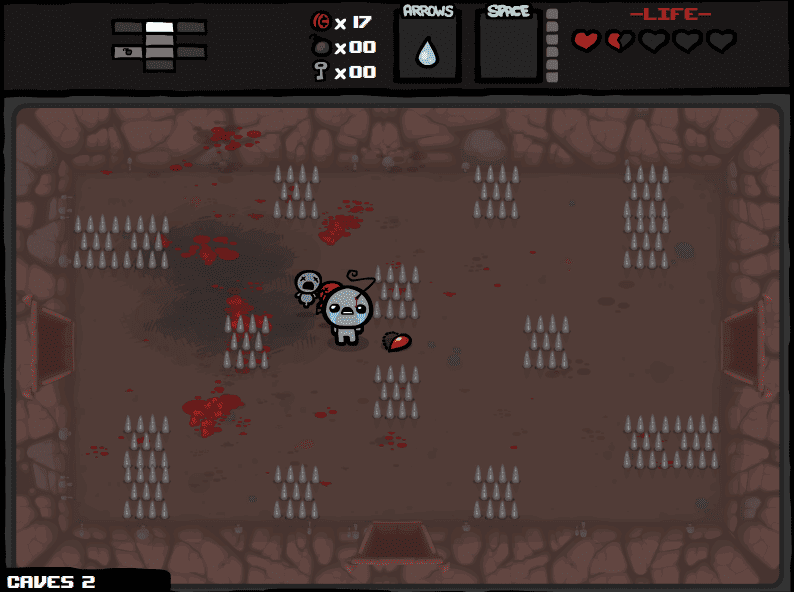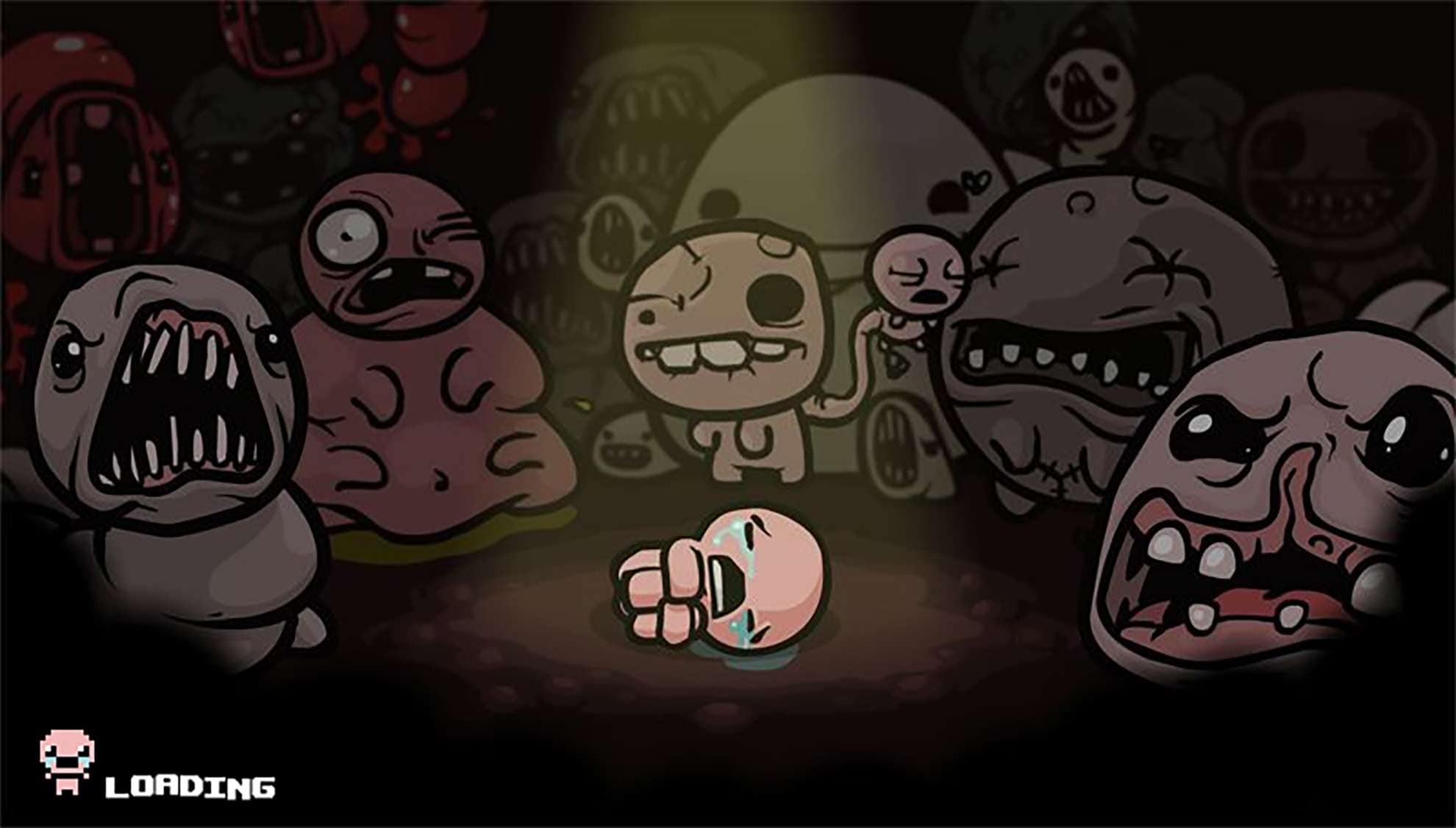In the gaming world, the lines between various genres often blur, leading to confusion and debates among fans and critics alike. One such debate centers around the distinction between “Roguelike” and “Roguelite” genres. These terms have roots in the classic 1980 game “Rogue,” but they’ve evolved in different directions over time. Understanding the distinction between these two classifications is crucial for analyzing modern games, such as “The Binding of Isaac.”
Released in 2011, “The Binding of Isaac” has become a cultural phenomenon in the gaming community. Developed by Edmund McMillen and Florian Himsl, the game combines elements of action, adventure, and randomly generated environments to provide a unique and challenging experience. The title has sparked conversations, not only about its engaging gameplay but also about its proper genre classification.
Traditional Roguelike games adhere to a strict set of principles often referred to as the “Berlin Interpretation.” These principles include turn-based gameplay, permadeath, randomly generated levels, and complex character development. Games that follow these principles to the letter are considered “true” Roguelikes. The term itself has become a hallmark of a particular kind of challenging, immersive gameplay experience.
On the other hand, “Roguelite” games are often considered a more accessible offshoot of the Roguelike genre. They tend to incorporate some, but not all, of the defining characteristics of traditional Roguelikes. By loosening some of the constraints, Roguelites allow for more diverse gameplay and a broader audience reach. This new subgenre has flourished in recent years, with many developers embracing the flexibility it offers.
So where does “The Binding of Isaac” fit within this spectrum? Is it a Roguelike, adhering to the strict principles of the genre, or does it fall into the Roguelite category, embracing a more flexible and modern approach? The answer to this question is not as straightforward as it may seem and requires an in-depth exploration of the game’s mechanics, design philosophy, and the evolution of these related genres. This article aims to dissect these elements to provide a definitive answer.
Historical Context of Roguelike and Roguelite
Let’s first look at the origin of roguelike and roguelite.
The Origin of Roguelikes
Following “Rogue,” the genre began to evolve, with titles such as “NetHack” and “Dungeon Crawl Stone Soup” expanding and refining the core mechanics. These games maintained the original’s challenging nature, emphasizing complex character development, strategic planning, and high difficulty levels.
Try my AI Tabletop RPG generators...and an extensive library of content!
Rise of Roguelite
As the gaming landscape shifted, so did the Roguelike genre. The emergence of Roguelite as a subgenre marked a deviation from traditional Roguelike principles. Games like “FTL: Faster Than Light” and “Spelunky” adopted some of the Roguelike features but introduced real-time gameplay, more accessibility, and various mechanics that diverged from the strict Roguelike definition.
Impact on Modern Gaming
Both Roguelike and Roguelite genres have had a profound impact on modern gaming. By influencing the design of contemporary titles, they’ve helped shape player expectations and experiences. The randomly generated levels and permadeath have found their way into various genres, offering a unique and challenging experience to a wide array of gamers.
H3: Relevance to The Binding of Isaac
The legacy of both Roguelike and Roguelite genres is clearly seen in “The Binding of Isaac.” This game borrows from both schools of design, infusing its gameplay with elements that honor the traditional Roguelike principles while also embracing the modern innovations of Roguelite. Understanding this historical context helps in dissecting the game’s mechanics, ultimately leading to a more accurate classification of its genre.

The Binding of Isaac – Gameplay Analysis
Next, we will take a look at the gameplay of Binding of Isaac to see if we can come up with an answer.
The Mechanics Overview
The Binding of Isaac’s core gameplay mechanics are a rich blend of exploration, combat, and discovery. With a top-down perspective, players navigate randomly generated dungeons, battling grotesque creatures and uncovering secrets. The unique combination of these elements leads to a fresh and engaging experience in each playthrough.
⚔️ Fantasy RPG Random Tables Books
Make life as a Gamemaster easier…
If you play Dungeons & Dragons, Pathfinder, or other fantasy RPGs, this
RPG random tables series
is packed with encounters, NPCs, treasure, and more. Available in eBook or print—either way, you’ll have a wealth of adventure ideas at your fingertips.
Randomly Generated Environments
One of the hallmarks of both Roguelike and Roguelite genres is the use of procedural generation to create levels. In The Binding of Isaac, every dungeon is randomly generated, ensuring that no two playthroughs are the same. This randomness adds to the challenge and replayability, key aspects that connect the game to its Roguelike heritage.
Character Development and Items
Character growth is a central component of The Binding of Isaac, reminiscent of traditional Roguelikes. Players can find and utilize various items and power-ups that modify their abilities. This system of growth through discovery, combined with the game’s extensive item pool, adds depth and complexity, allowing for varied strategies and play styles.
Death and Continuation
Permadeath, where losing all of one’s life means starting over from the beginning, is another classic Roguelike feature present in The Binding of Isaac. Though unforgiving, it reinforces the high-stakes nature of the game. Unlike some Roguelites, The Binding of Isaac does not provide significant progress retention between runs, making each playthrough a self-contained challenge.
Comparison to Roguelike and Roguelite Features
Comparing The Binding of Isaac’s gameplay with the defining characteristics of Roguelike and Roguelite genres, one can see elements of both. While the game adopts the procedural generation and permadeath of Roguelikes, it also includes real-time combat and some accessibility features typical of Roguelites. This fusion of elements makes its classification both intriguing and complex.
Community and Critical Reception
All that is well and good, but what about the reception from the community? Let’s dig into it, shall we?
Player Perspectives
The Binding of Isaac has cultivated a dedicated fanbase that actively engages in discussions around the game. Players’ perspectives on the genre classification vary widely, with some insisting on its Roguelike status, while others lean towards the Roguelite definition. These varying opinions reflect the game’s unique blend of traditional and modern elements.
Critical Opinions
Professional critics also offer different takes on The Binding of Isaac’s genre classification. Some reviews praise its adherence to Roguelike principles, such as permadeath and complex gameplay mechanics, while others emphasize its accessibility and flexibility, aligning it more with Roguelites. This divergence in critical opinion adds another layer to the classification debate.
Community Discussions
Online forums, social media, and community hubs dedicated to The Binding of Isaac abound with lively debates about its genre. These discussions often delve into intricate details of the game, comparing it with other titles in the Roguelike and Roguelite genres. The passionate engagement of the community in these debates highlights the game’s impact and the complexity of the classification issue.
Developer’s Intent
The creators of The Binding of Isaac, Edmund McMillen and Florian Himsl, have expressed their views on the game’s design and genre. Their insights provide valuable context for understanding the intentional blending of Roguelike and Roguelite elements. Developer commentary helps illuminate the game’s design philosophy, which seems to embrace aspects of both genres without being strictly confined to one.
Impact of Reception on Classification
The varying opinions of players, critics, and the developers themselves contribute to the ongoing debate about The Binding of Isaac’s proper genre classification. The diversity of perspectives reflects the game’s unique position at the intersection of two closely related but distinct genres. This section underscores how the reception and interpretation of the game can influence its classification, adding to the complexity of defining its exact place in the gaming landscape.
Comparison with Other Games
Now, we’ll take a look at how Binding of Isaac compares to other games – both roguelikes and roguelites.
Similarities to Traditional Roguelikes
Comparing The Binding of Isaac to traditional Roguelikes such as “NetHack” or “Dungeon Crawl Stone Soup” reveals several common elements. The randomly generated levels, permadeath, and complex character development are all aspects that align The Binding of Isaac with the traditional Roguelike genre. These similarities provide compelling evidence for classifying the game within this category.
Contrasts with Other Roguelites
When contrasted with other popular Roguelites like “FTL: Faster Than Light” or “Dead Cells,” The Binding of Isaac demonstrates key differences. While it shares some accessibility and real-time gameplay features with Roguelites, it often adheres more strictly to traditional Roguelike principles, such as limited progress retention between runs. These contrasts help differentiate The Binding of Isaac from typical Roguelites.
⚔️ Fantasy RPG Random Tables Books
Make life as a Gamemaster easier…
If you play Dungeons & Dragons, Pathfinder, or other fantasy RPGs, this
RPG random tables series
is packed with encounters, NPCs, treasure, and more. Available in eBook or print—either way, you’ll have a wealth of adventure ideas at your fingertips.
A Genre Spectrum
Positioning The Binding of Isaac on a spectrum between Roguelike and Roguelite reveals a complex relationship. It’s neither a pure Roguelike nor a clear-cut Roguelite, but rather a hybrid that borrows from both genres. By examining where it sits on this spectrum, we can appreciate the nuances that make genre classification a challenging task.
Case Studies
Analyzing similar games that tread the line between Roguelike and Roguelite provides further insight. Titles like “Enter the Gungeon” and “Darkest Dungeon” share some of The Binding of Isaac’s blended characteristics. These case studies serve to contextualize The Binding of Isaac within a broader landscape of games that defy easy categorization.
Broader Genre Implications
The comparison of The Binding of Isaac with other games in both genres illustrates the fluidity and complexity of modern game classification. It raises questions about how we define genres and the implications for both developers and players. Understanding The Binding of Isaac’s unique position contributes to a larger discussion about the evolution of game genres and what it means for the future of gaming.
Conclusion and Implications
What have we learned? Let’s break it down.
Summary of Findings
We’ve explored The Binding of Isaac’s genre classification from various angles, including gameplay analysis, community reception, comparison with other games, and a look at broader genre implications. Through this multifaceted examination, we’ve seen that the game defies simple categorization, embracing elements of both Roguelike and Roguelite genres.
Definitive Classification
While The Binding of Isaac shares characteristics with both Roguelike and Roguelite games, its unique blend of features makes it a hybrid that occupies a space between these two categories. It honors traditional Roguelike principles while also incorporating modern Roguelite elements. Therefore, it may be most accurate to consider The Binding of Isaac as a bridge between these genres rather than fitting neatly into one or the other.
Impact on Game Design
The Binding of Isaac’s genre-blending approach provides valuable insights for game developers. It demonstrates that creativity and innovation can thrive outside strict genre boundaries. By embracing a flexible design philosophy, developers can create engaging experiences that appeal to diverse audiences without being constrained by traditional genre definitions.
Influence on Player Experience
For players, understanding The Binding of Isaac’s complex genre identity can enhance appreciation and enjoyment of the game. Recognizing its roots in both Roguelike and Roguelite traditions can lead to a deeper connection with the gameplay and mechanics. This nuanced perspective adds richness to the player experience and encourages exploration and discovery within the game.
Try my AI Tabletop RPG generators...and an extensive library of content!
Future of the Genres
The Binding of Isaac’s unique position within the Roguelike and Roguelite spectrum prompts reflection on the future of these genres. As the lines between genres continue to blur and evolve, we may see more games that defy easy classification. This trend could lead to a more dynamic and innovative gaming landscape, where genre definitions become more fluid and inclusive.










